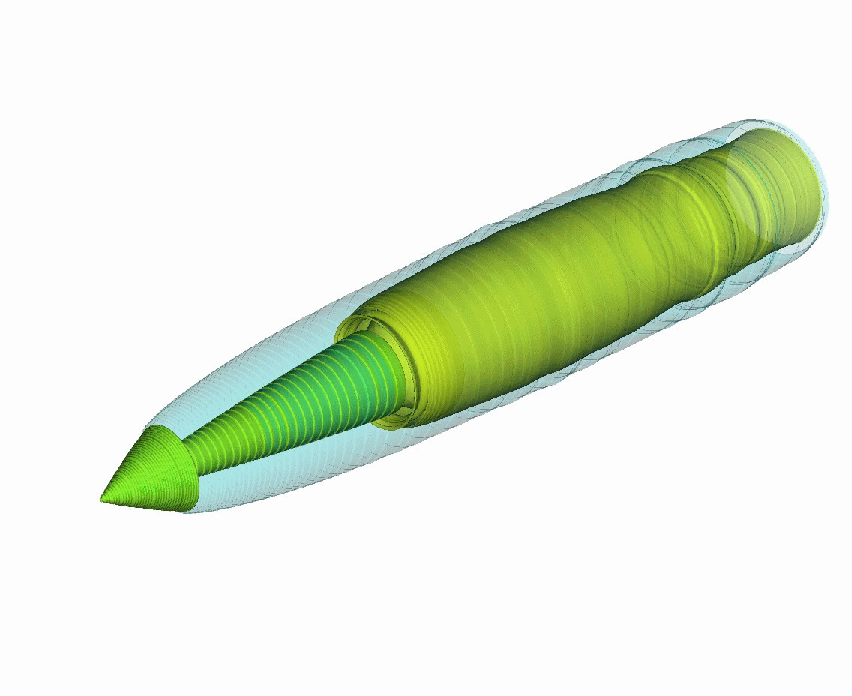Section: Overall Objectives
Presentation
Smash is a common project between INRIA Sophia Antipolis – Méditerranée and Aix-Marseille University. Its main topic is related to both the mathematical and numerical modelling of heterogeneous flows such as multiphase media, granular materials and interface problems.
The first issue deals with the design and improvements of theoretical models for multiphase and interfacial flows. Particular attention is paid to well posedness issues and system's hyperbolicity.
The second issue deals with the design of appropriate numerical schemes. These models are not known as well as conventional single fluid models and pose numerical challenges such as, for example, the numerical approximation of non–conservative terms. These numerical issues pose theoretical questions such as, shock wave existence in multiphase mixture, cell averages of non–conservative variables, Chapman–Jouguet detonation conditions for heterogenous explosives and so on.
The final aim is to implement the resulting algorithms on parallel machines for solving large scale problems for the design of advanced technology systems in Space, Defense and Nuclear energy, but also in security problems such as the propagation of polluants in urban atmosphere and environment.
One of the main original features of the Smash researches on heterogeneous flows lies in the way we deal with multiphase mixtures. Our aim is to solve the same equations everywhere with the same numerical method :
-
in pure fluid,
-
in multi-velocity mixtures,
-
in artificial smearing zones at material interfaces or in mixture cells,
-
in shocks, phase transition fronts, detonation waves,
-
in elastic-plastic materials.
An example of such computations is given in the figure 1 .
|
There are some advantages with this approach :
-
the most obvious relies in the coding simplicity and robustness as a unique algorithm is used;
-
conservation principles are guarantied for the mixture. Conventional algorithms are able to preserve mass conservation only when dealing with interfaces;
-
interface conditions are perfectly matched even for the coupling of complex media (granular flows, capillary fluids, transition fronts) even in the presence of shocks;
-
this approach is the only one able to deal with dynamic appearance of interfaces (cavitation, spallation);
-
our methods allow the coupling of multi-velocities, multi-temperatures mixtures to macroscopic interfaces where a single velocity must be present. To illustrate this capability consider the example of a cloud of bubbles rising up in a liquid to the surface, where a free boundary is present. Two velocities have to be considered for the bubbles rising, while a single velocity must be present just after their crossing through the interface. This is also the only method able to deal with such situations.
Our approach rises increasing attention from the scientific community as well as the industry. As will be detailed further, many projects are currently under development with french oriented research centers (DGA, CNES, SNECMA) as well as foreign ones (Idaho National Laboratory - USA, ADD, Korea).



